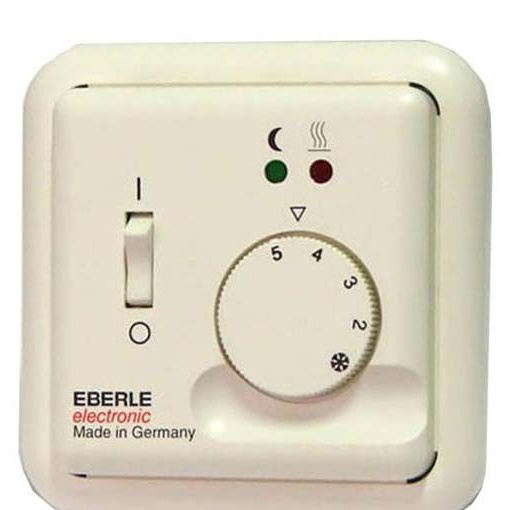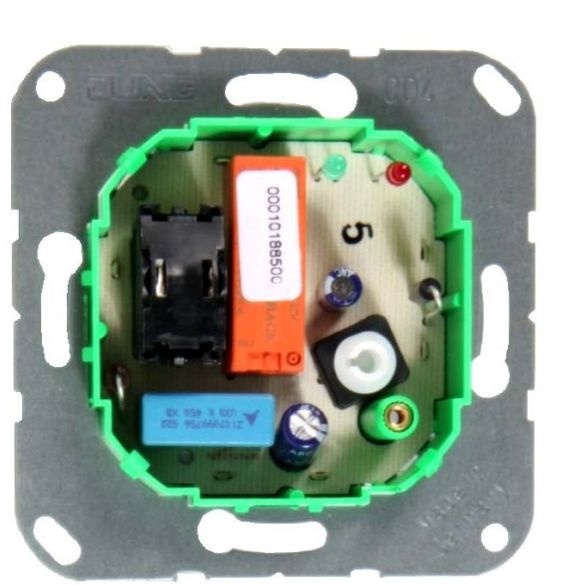As you refuse, people are asking.
Somehow he turned to me alone summer residentfrom a nearby street. He stopped working underfloor heating in the bath. After on-site inspection and verification by the tester, it became clear that only electronic the temperature regulator, and the heater, in fact, the underfloor heating itself, remained intact.
As it turned out, the thermostat is very smart, expensive, (almost 2500 rubles) and find the same model even in the city is problematic, but in the village it is completely unrealistic. The photos below clearly show how it works. On the board you can see the relay, the switch, the regulating resistor and LEDs. A connector block, a microcontroller, and a power circuit are soldered on the back of the board. I could try to fix this board, but in this case the medicine was powerless - a hole burnt by a powerful discharge was visible on the microcontroller.
They thought to put some other block instead of the burned one - but this is also not easy, those that were or did not fit in size, or the power is different, or the temperature sensor is not that.
To restore the functionality of the warm floor, the following was required:
1. Dimer
2. Triac VTB24-600V
3. Soldering iron
4. Black marker
Then in the nearest hardware store (there is one here!) I bought an ordinary dimer, a dimmer for light bulbs, for 120 rubles. In size, it fit exactly into the seat from the burned-out thermostat. Moreover, the owner of the bath, in principle, did not care how many degrees there were on the floor, 35, 37 or 39, the main thing is that there is heat and it can be added or reduced. From the resistance of the heater, I roughly calculated that the power of its warm floor is from 500 to 700 watts.
And the dimer I bought, so well-sized, had a capacity of only 400 watts. I had to upgrade it, or rather strengthen it.
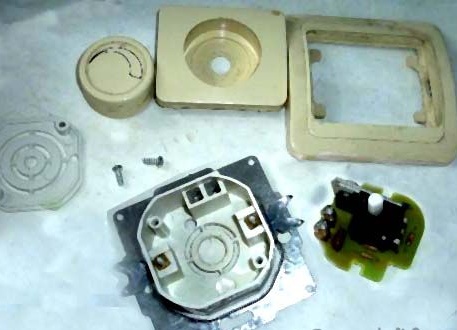

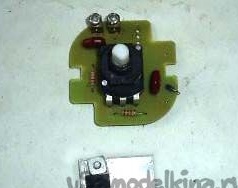
We disassemble the dimer, pull out the board from it and solder the triac, which is mounted on a small aluminum radiator. There stands VT137-600, at 8 Amps and 600 volts. Instead, I put another triac, from my reserves, more powerful, VTV24-600V, at the same voltage, but with a maximum current of 25 Amps. After that, we collect the dimer and turn it on in series with the underfloor heating, as in the native scheme. We check how everything works and then install in place of the former thermostat.
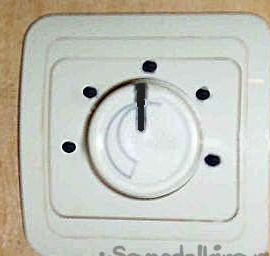
On the dimer case, I put a marker from 0 to 100% power on the marker. Now we turn on the underfloor heating either at full power (100%), or at 75% of power, or half (50%), so that a lot does not run into the meter.
And yet it is an important property of such an inclusion circuit. When using both digital and analog thermostats, the load (the warmest floor itself) is switched on periodically, through a relay whose contacts supply voltage of 220V to the heater. Immediately and sharply. And they turn off the voltage as soon as the floor heats up to the set value. But in my practice there was a case when a heating element of a warm floor burned out from a sharp inrush. I think this happened because the resistance of a cold heating element in a warm floor is less than that of a heated one. Yes, and the outlet is not always 220 volts, and sometimes there are more. This often happens with us. Imagine if the heater burns, how much will it cost to replace a warm floor?
And in the dimer controller there is no such drawback, because in any case, the voltage to the heater is supplied smoothly, manually, from almost 0 to 100%. Yes, and none of those to whom I then made such a system does not include their underfloor heating 100%, most and 50% are quite enough.
And in addition to the above. Once again, repeating this design when installing a warm floor in another, more “cool” bath, I suddenly ran into a problem - the customer had a warm floor in a sort of, to put it mildly, very large bath, with a total capacity of about 1800 watts. And dimers, even after amplification, are designed for a maximum of 700 watts. And what to do? The floor can not be changed, and the dimer cannot be replaced, all the walls are already lined and painted. The way out was found. I again disassembled the dimer, pulled out the regulating thyristor, and put it on the external additional radiator. He hid the radiator and extension wires inside a brick partition. Now everything works. And nothing is visible from the outside.
However, one must be more modest, with baths - that, comrades ...

